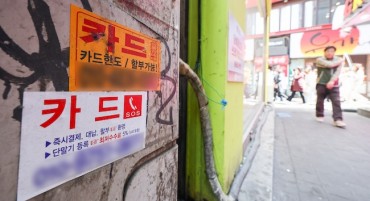
Compared to a few years ago, the number of desktop computers in South Korean homes has decreased dramatically due to the widespread use of smartphones and other mobile devices. (Image: Korea Bizwire)
SEOUL, Feb. 1 (Korea Bizwire) – Compared to a few years ago, the number of desktop computers in South Korean homes has decreased dramatically due to the widespread use of smartphones and other mobile devices.
The Ministry of Science and ICT and the KISA (Korea Internet & Security Agency) disclosed the results of their “2017 Internet Fact-Finding Study” — an investigation into South Korean internet usage patterns among households and individuals — on January 31.
A total of 25,000 households and 62,540 individuals above the age of 3 were subjects of the study.
Among the participants, 90.3 percent of the individuals were found to have accessed the internet at least once in the past month (2 percentage points higher than in 2016), while virtually all households did likewise (99.5 percent, a 0.3 percentage point increase).
After reaching a high of 82.3 percent for households that possessed desktop computers, laptops and tablets, last year 74.7 percent still owned these devices.
Specifically, ownership of laptops (20.2 percent to 31.7 percent) and tablets (4.1 percent to 11.2 percent) rose from 2012 to 2017, but desktops began to fall out of favor.
Desktop ownership dropped from 60.9 percent to 43.7 percent in single-person households, from 69.6 percent to 56.4 percent in two-person households, and from 96.9 percent to 94.5 percent in households with three or more inhabitants.
The drop-off in single- and two-person households can be explained by the transition from desktop computers to mobile devices for internet use.

The drop-off in single- and two-person households can be explained by the transition from desktop computers to mobile devices for internet use. (Image: Korea Bizwire)
For the three categories of online shopping, internet banking and social media use, in 2012 internet users accessed these services via desktop computer 89 percent, 94.9 percent and 81.6 percent of the time. Smartphones were used a relatively paltry 23.8 percent, 29.2 percent and 62 percent.
Data from 2017 reveals the tables have been flipped completely, with internet users reaching for their smartphones 90.6 percent, 90.5 percent and 99.7 percent of the time to access the three services. Desktop use dropped considerably to 65.2 percent, 55.6 percent and 36.5 percent.
Among the individuals who accessed the internet in the past month, 97.9 percent did so at least once per week, and average usage time was clocked at 15.7 hours.
Average weekly usage hours have continued to climb steadily, from 13.6 hours in 2015 to 14.3 hours in 2016.
Last year, internet users six years old and older who accessed internet communications services predominantly used instant messaging services (95.1 percent), followed by social networking services (68.2 percent) and e-mail (60.2 percent).
Among internet users 12 years old and above, 59.6 percent and 63.1 percent accessed online shopping and internet banking, respectively, last year.
S.B.W. (sbw266@koreabizwire.com)






